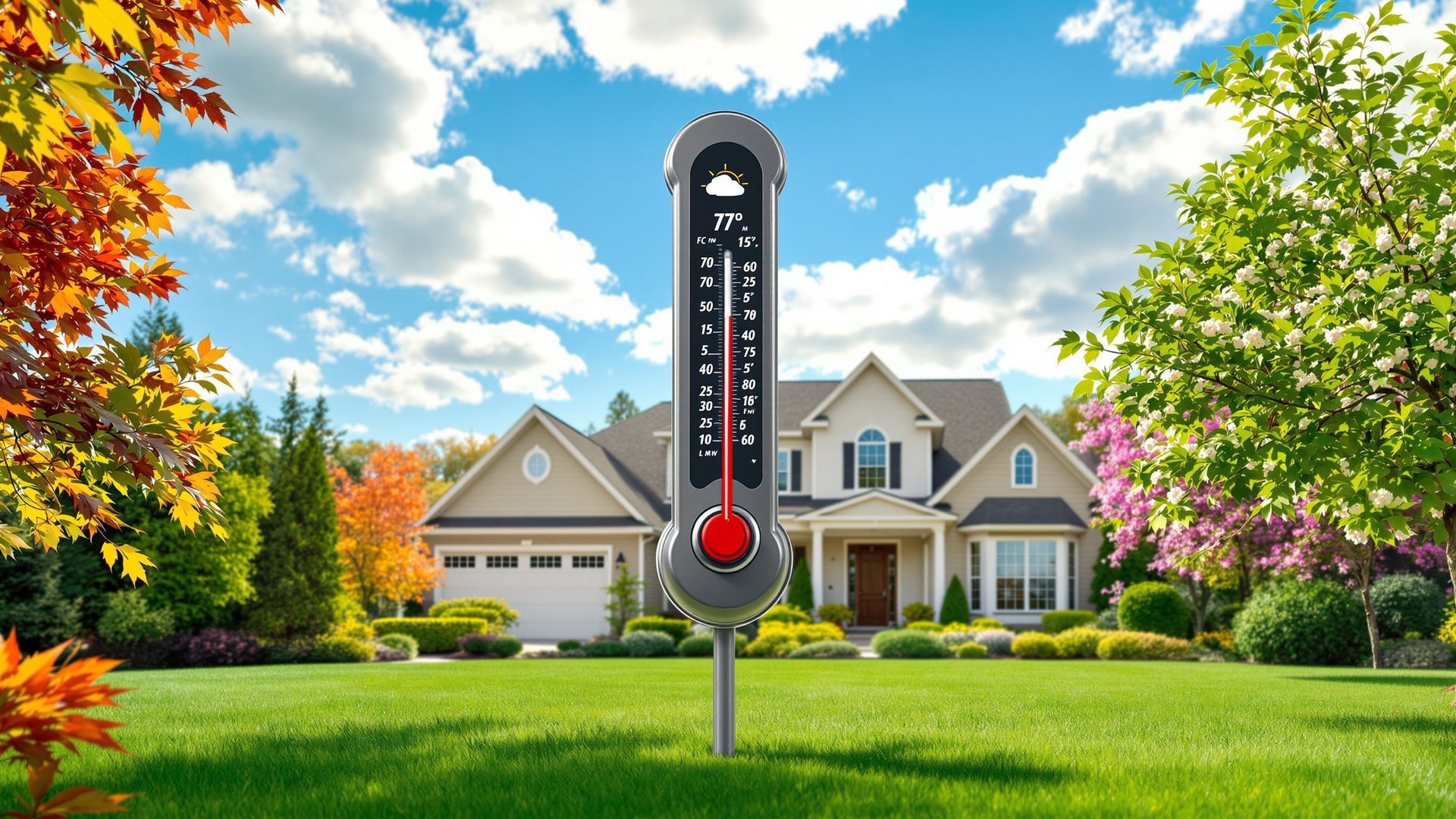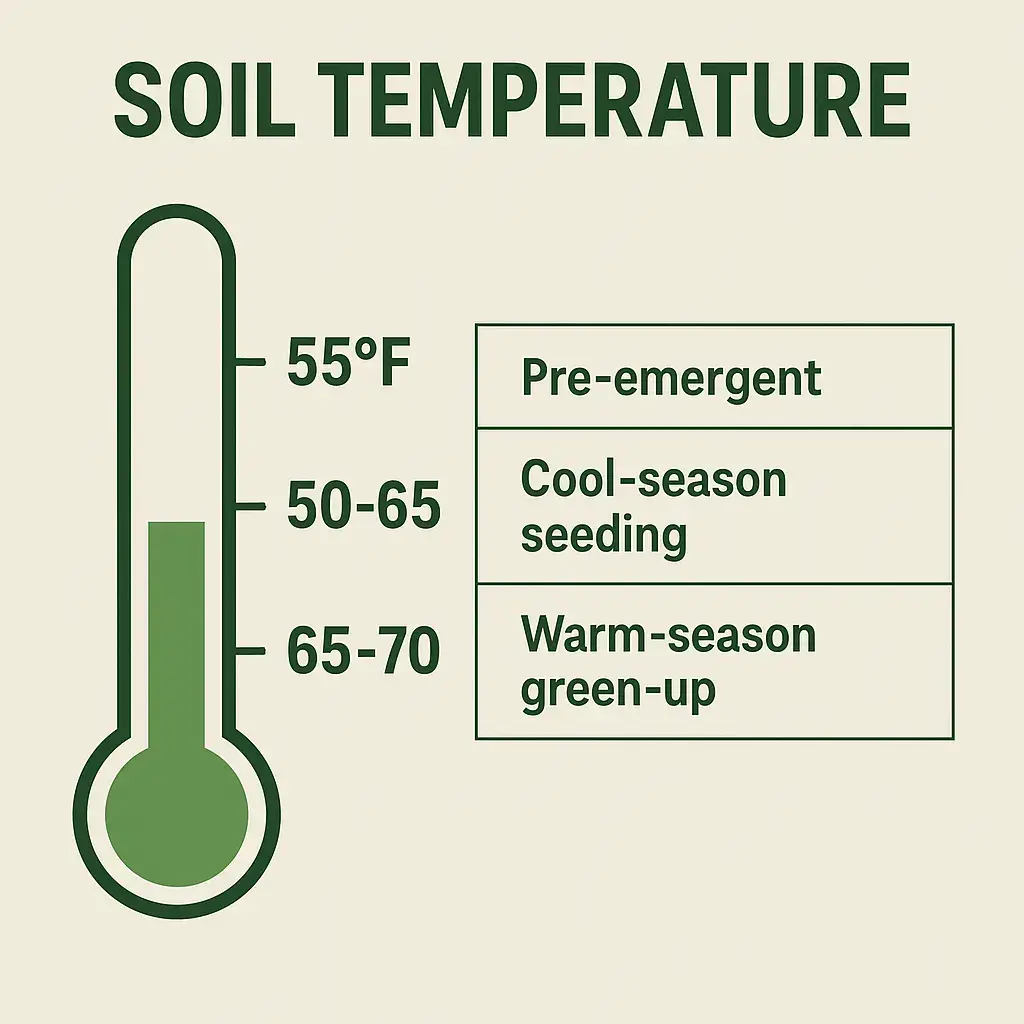
Local climate sets your lawn’s clock. Temperature, soil warmth, rainfall, humidity, and wind determine when to water, mow, fertilize, seed, and control weeds. Ditch fixed dates—watch your weather. Frosts, heat spikes, and microclimates move everything, so you time care to growth, save water and products, and get greener results. It’s timing, not luck.
If you only track one thing, track temperature. Grass responds to heat, not the month.
Warm-season lawns (Bermuda, zoysia, St. Augustine) wake up when nights are mild and days are consistently 75–95°F. Fertilize after full green-up—usually late spring.
A quick story: My neighbor waited for “Memorial Day” to fertilize his Bermuda during a cool May. It barely took. Two weeks later, temps warmed, he fed again lightly, and the lawn finally popped. The thermometer told the truth; the calendar didn’t.

Soil temps are the best timing signals for seeding and pre-emergents.
Starter fertilizer: Pair with seeding; for mature lawns, fertilize when grass is actively growing, not just because the bag says so.
Tip: Grab a cheap soil thermometer or check a reliable local soil temp map. Five minutes can save an entire season of rework.
Water timing isn’t “every Tuesday.” It’s “when the weather says go.”
Aim for roughly 1 inch per week in growing season, but adjust using your local evapotranspiration (ET) rate.
Imagine this: A breezy, low-humidity week can “drink” your moisture twice as fast as a calm, muggy week. That’s why Turfrain’s smart controllers use local weather to adjust run times automatically—no more puddles on Tuesday and crispy blades by Friday.
Your front yard and backyard live different lives.
Low spots stay cooler and wetter—delay watering and pre-emergent there to avoid waste.
A tiny slope, a fence line, even a dark mulch bed can create mini weather zones. Treat them like “rooms” in your yard with slightly different schedules.
When you time lawn care to your local climate, you stop guessing—and start growing. Temperature, soil warmth, rain, and those quirky microclimates give you a simple, reliable playbook. If you want an easy button, Turfrain can set up weather-based irrigation and fine-tune schedules to your yard’s quirks. Ready to make timing effortless? Contact Us, and let’s give your lawn the rhythm it deserves.
Wondering if it’s too late to take action? Read our next guide — Can I wait until December? — to find out how timing affects late-season lawn care.